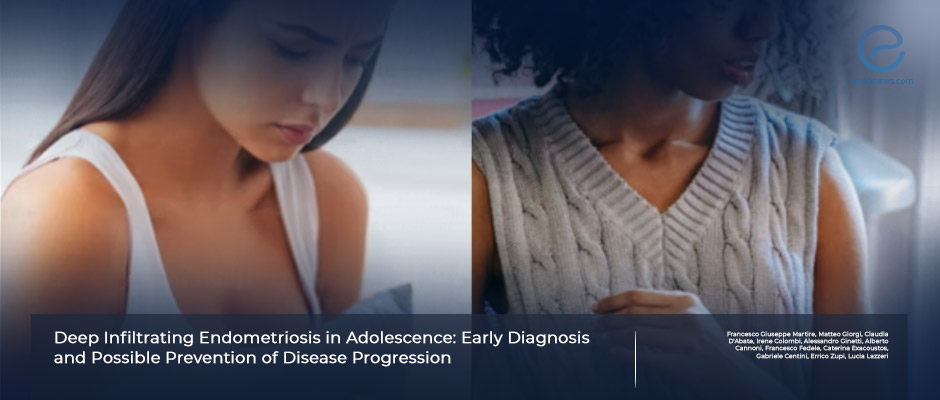Early diagnosis of deep infiltrating endometriosis in adolescence
Mar 28, 2024
A timely diagnosis is crucial to prevent the disease's progression and start treatment early.
Key Points
Importance
- Endometriosis is a leading cause of secondary dysmenorrhea in adolescents.
- Despite the severe painful symptoms, diagnosis of endometriosis in adolescents is still challenging.
Highlights
- The early timing for diagnosis of endometriosis and adenomyosis in adolescents is important: It will help to prevent the disease progression, improve the quality of life, and ensure future fertility.
What's done here
- This article reviews the prevalence, early diagnosis, pathologic theories, management, and treatment options of deep-invaded endometriosis in adolescents.
- An Italian author team conducted an electronic English literature search using the MedLine database to review the articles on adolescents and DIE from inception to October 2023.
Outline
- The pathogenesis of endometriosis and its early onset in adolescence remains controversial. Deep endometriosis may be the consequence of genetically or epigenetically modified cells.
- The actual prevalence of deep endometriosis in adolescence is still a mystery. The percentage of visually confirmed endometriosis can rise to 75% in girls undergoing laparoscopic examination due to resistance to pelvic pain treatment.
- Dysmenorrhea is a prominent symptom of endometriosis at an early age. Gastrointestinal and urinary symptoms in adolescents are also important, suggesting the presence of DIE and adenomyosis.
- Although imaging could be limited in young patients, it is necessary to investigate DIE lesions with MRI and US. Investigation of adenomyosis is important in adolescents who have been diagnosed with DIE.
. The aim of the treatment should be to reduce the pain, suppress the disease, and safeguard future fertility after the diagnosis.
. Progestin treatment should be considered as the first-line therapy to control the painful symptoms and to slow down the DIE growth due to its antiestrogenic effect.
. The optimal timing for surgery is controversial. When the surgery cannot be postponed, ovarian tissue cryopreservation must be considered due to a higher risk of premature ovarian failure.
Lay Summary
Dysmenorrhea is widely observed in adolescence, and endometriosis is one of its causes. However, endometriosis diagnosis is usually made after 25 years of age. It is clear that early diagnosis and management of this progressive disease is essential and will have a good impact both on the quality of life and fertility. Moreover, patients who undergo surgery in advanced stages of the disease have more intra and postoperative complications.
Martire et al. from the Gynecology Unit of the Department of Surgical Sciences of the University of Rome, Italy, aimed to report the prevalence and pathologic theories and to discuss the early diagnosis and treatment alternatives through previous literature.
Two authors independently searched the literature articles from inception to October 2023 that meet the inclusion criteria. The results of 137 articles were widely discussed to provide an overview of DIE in adolescence. Based on the available literature, the authors discussed possible pathogenesis, clinical symptoms, techniques used for diagnosis, primary and secondary medical treatments, and surgery alternatives.
This complex and chronic disease needs long-term management starting in adolescence. Therefore, the authors advise referring the adolescent to a tertiary care center for the best management. If medical treatments such as progestins, oral contraceptives, and GnRH analogs fail to improve the painful cycles and quality of life, surgery should be the option. Ovarian cryopreservation should also be considered for future fertility.
This review article was recently published in the Journal of Clinical Medicine.
Research Source: https://pubmed.ncbi.nlm.nih.gov/38256683/
pelvic pain adolescence diagnosis heavy menstrual bleeding secondary dysmenorrhea treatment deep infiltrating endometriosis.

